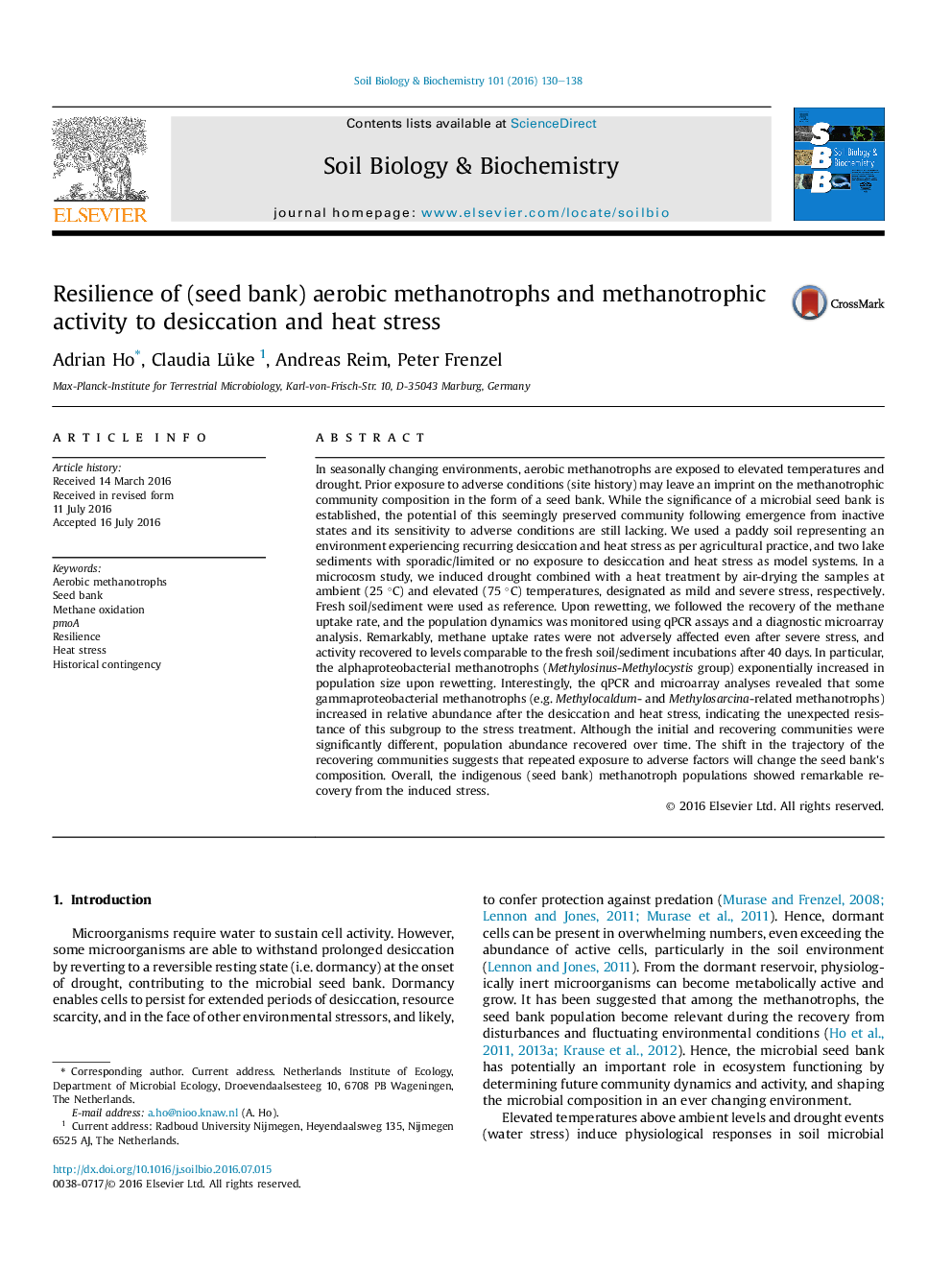| کد مقاله | کد نشریه | سال انتشار | مقاله انگلیسی | نسخه تمام متن |
|---|---|---|---|---|
| 8363438 | 1542583 | 2016 | 9 صفحه PDF | دانلود رایگان |
عنوان انگلیسی مقاله ISI
Resilience of (seed bank) aerobic methanotrophs and methanotrophic activity to desiccation and heat stress
ترجمه فارسی عنوان
انعطاف پذیری (متانوتروفی هوازی) و فعالیت متانوتروفی (خشکی و استرس گرما)
دانلود مقاله + سفارش ترجمه
دانلود مقاله ISI انگلیسی
رایگان برای ایرانیان
کلمات کلیدی
موضوعات مرتبط
علوم زیستی و بیوفناوری
علوم کشاورزی و بیولوژیک
دانش خاک شناسی
چکیده انگلیسی
In seasonally changing environments, aerobic methanotrophs are exposed to elevated temperatures and drought. Prior exposure to adverse conditions (site history) may leave an imprint on the methanotrophic community composition in the form of a seed bank. While the significance of a microbial seed bank is established, the potential of this seemingly preserved community following emergence from inactive states and its sensitivity to adverse conditions are still lacking. We used a paddy soil representing an environment experiencing recurring desiccation and heat stress as per agricultural practice, and two lake sediments with sporadic/limited or no exposure to desiccation and heat stress as model systems. In a microcosm study, we induced drought combined with a heat treatment by air-drying the samples at ambient (25 °C) and elevated (75 °C) temperatures, designated as mild and severe stress, respectively. Fresh soil/sediment were used as reference. Upon rewetting, we followed the recovery of the methane uptake rate, and the population dynamics was monitored using qPCR assays and a diagnostic microarray analysis. Remarkably, methane uptake rates were not adversely affected even after severe stress, and activity recovered to levels comparable to the fresh soil/sediment incubations after 40 days. In particular, the alphaproteobacterial methanotrophs (Methylosinus-Methylocystis group) exponentially increased in population size upon rewetting. Interestingly, the qPCR and microarray analyses revealed that some gammaproteobacterial methanotrophs (e.g. Methylocaldum- and Methylosarcina-related methanotrophs) increased in relative abundance after the desiccation and heat stress, indicating the unexpected resistance of this subgroup to the stress treatment. Although the initial and recovering communities were significantly different, population abundance recovered over time. The shift in the trajectory of the recovering communities suggests that repeated exposure to adverse factors will change the seed bank's composition. Overall, the indigenous (seed bank) methanotroph populations showed remarkable recovery from the induced stress.
ناشر
Database: Elsevier - ScienceDirect (ساینس دایرکت)
Journal: Soil Biology and Biochemistry - Volume 101, October 2016, Pages 130-138
Journal: Soil Biology and Biochemistry - Volume 101, October 2016, Pages 130-138
نویسندگان
Adrian Ho, Claudia Lüke, Andreas Reim, Peter Frenzel,
